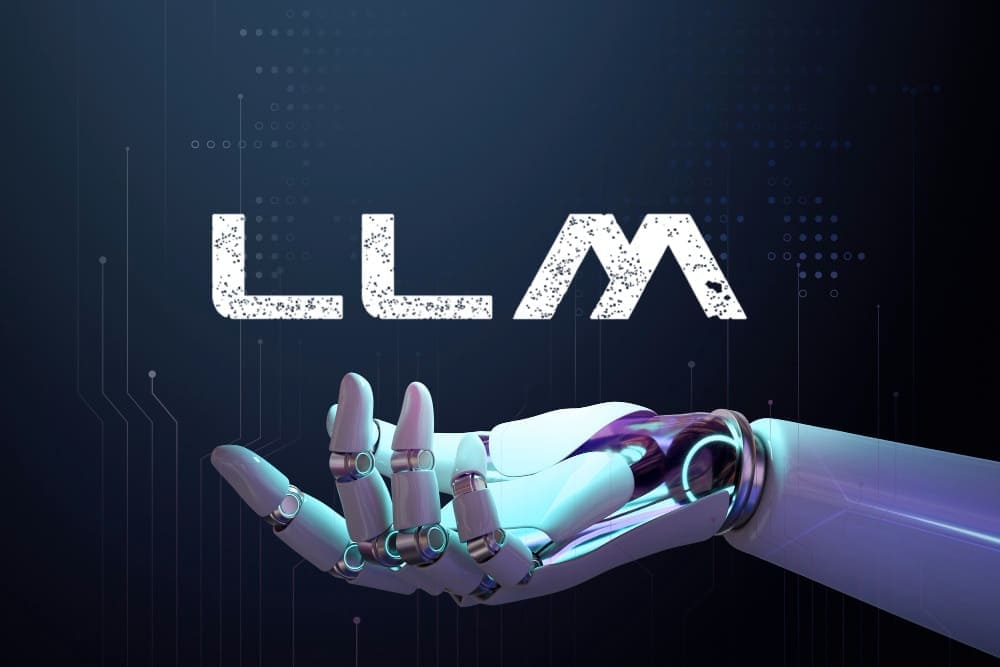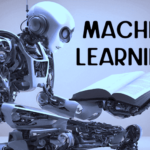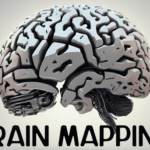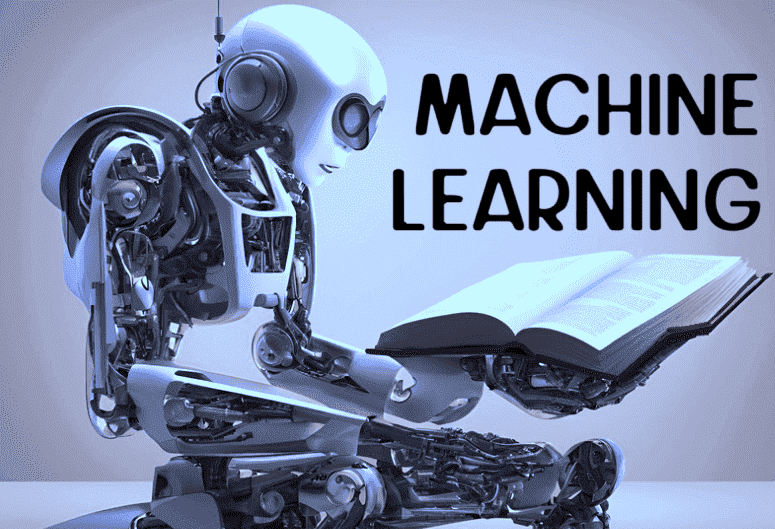
Overview:
In the ever-evolving landscape of artificial intelligence, Large Language Models (LLMs) exemplify the cutting-edge innovations reshaping how machines comprehend and generate human language. To comprehend what is a Large Language Model, we first have to understand their immense scale and complexity, which represent a pinnacle of AI achievement. They excel in processing and generating text with unprecedented accuracy and contextual understanding, showcasing their versatility from crafting coherent narratives to delivering insightful analyses. LLMs like GPT-3 have become instrumental across diverse applications, sparking excitement and driving innovation across industries.
Key trends are driving the evolution of LLMs, each contributing to their expanding capabilities and potential impact. The continuous quest for larger models with billions of parameters underscores a commitment to pushing the boundaries of linguistic comprehension and computational power. Simultaneously, the integration of multimodal capabilities—merging text with visual and auditory inputs—promises to revolutionize interactive experiences and broaden the scope of AI applications. As researchers refine pre-training methodologies and tackle challenges of efficiency and sustainability, LLMs are poised to not only enhance human-AI collaboration but also address complex societal challenges with unprecedented sophistication and insight.
Contents:
- What is a Large Language Model (LLM)
- How LLMs are different from Foundation Models
- Understand the Large Language Models (LLMs) through a few notable examples
- Key technologies enabling Large Language Models (LLMs)
- Key benefits offered by Large Language Models (LLMs)
- Key challenges with Large Language Models (LLMs)
- The future outlook of Large Language Models (LLMs)
- Summing Up
So, what is a Large Language Model:
A Large Language Model (LLM) is a type of artificial intelligence (AI) model specifically designed for natural language processing (NLP) tasks. These models are typically based on deep learning architectures, particularly transformer networks, and are trained on vast amounts of text data.
How LLMs are different from Foundation Models:
Large Language Models (LLMs) and Foundation Models are related concepts in the field of artificial intelligence, but they differ primarily in terms of scale, purpose, and customization. Here’s how they compare:
Scale: LLMs are specifically known for their massive scale in terms of parameters, designed to handle large-scale language understanding and generation tasks, while Foundation Models may vary in size depending on their intended use case and flexibility.
Purpose: LLMs are specialized models that have been fine-tuned for specific tasks after extensive pre-training, whereas Foundation Models are more general and serve as starting points for building specialized models.
Customizability: Foundation Models are highly customizable and extensible, allowing for adaptation to diverse applications and domains, whereas LLMs are typically used as-is or with minor fine-tuning for specific tasks.
Now, let’s understand the Large Language Models (LLMs) through a few notable examples:
1. GPT-3 (Generative Pre-trained Transformer 3)
Description:
GPT-3, developed by OpenAI, is one of the largest and most advanced LLMs to date, released in mid-2020. It consists of 175 billion parameters and is based on the transformer architecture.
Capabilities:
Text Generation: GPT-3 can generate coherent and contextually relevant text based on prompts provided to it. For example, given a starting sentence, it can continue with a plausible continuation or even write essays, stories, or articles.
Conversation: It can engage in dialogue with users, providing responses that are contextually appropriate and often indistinguishable from human-generated text.
Language Translation: While not its primary function, GPT-3 can provide rudimentary translation capabilities by processing text in different languages.
Creative Writing: It can compose poetry, create jokes, and generate imaginative content.
Applications:
Chatbots: GPT-3 powers chatbots that can handle a wide range of customer service queries, provide personalized responses, and engage in meaningful conversations.
Content Creation: It can assist writers and content creators by generating ideas, drafting initial drafts, or summarizing complex topics.
Education: GPT-3 can generate explanations for educational content, answer student queries, and provide tutoring-like interactions.
Example:
“Hey GPT, can you continue this story about a detective solving a mysterious murder?”
Response: “The detective cautiously approached the dimly lit room, his footsteps echoing in the silence. As he examined the scene, a chill ran down his spine — the victim’s body lay motionless, a single clue etched in blood on the wall.”
2. BERT (Bidirectional Encoder Representations from Transformers)
Description:
BERT, developed by Google, is another prominent LLM known for its bidirectional approach to language understanding. Released in 2018, it revolutionized how LLMs process and comprehend natural language.
Capabilities:
Contextual Understanding: BERT can understand the context of words in sentences and their relationships, which helps in tasks like sentiment analysis, question answering, and named entity recognition.
Sentence Classification: It can classify the intent or sentiment of a sentence accurately based on its context.
Language Inference: BERT can determine whether a statement logically follows from another statement.
Applications:
Search Engines: BERT improves search engine results by better understanding user queries and matching them to relevant web pages.
Text Summarization: It can generate concise summaries of long texts while preserving key information.
Sentiment Analysis: BERT powers sentiment analysis tools that gauge the sentiment expressed in customer reviews, social media posts, and other text sources.
Example:
“BERT, can you summarize this article about climate change?”
Response: “The article discusses the impact of climate change on global temperatures, weather patterns, and ecosystems. It highlights the urgency of reducing carbon emissions to mitigate its effects on the environment and human health.”
3. T5 (Text-To-Text Transfer Transformer)
Description:
T5, developed by Google Research, introduced the concept of text-to-text models where all NLP tasks are treated as a text-to-text problem. It’s highly versatile and capable of performing a wide range of tasks.
Capabilities:
Universal Framework: T5 can be fine-tuned to perform tasks such as translation, summarization, classification, and question answering by rephrasing the task into a text input-output format.
Multi-task Learning: It can simultaneously learn to perform multiple tasks by training on a diverse dataset with varied annotations.
Applications:
Multilingual Applications: T5 can translate between multiple languages and adapt to different linguistic nuances.
Data Augmentation: It can generate synthetic data to augment training datasets for improved model performance.
Customization: T5 can be adapted to specific domains or tasks by fine-tuning on domain-specific data.
Example:
“T5, can you summarize the main points of this research paper on artificial intelligence?”
Response: “The paper explores recent advancements in AI research, including neural network architectures, natural language processing techniques, and applications in computer vision. It discusses challenges and future directions for AI development.”
Key technologies enabling Large Language Models (LLMs):
1. Transformer Architecture:
Transformers are the foundational architecture for LLMs, first introduced in the paper “Attention is All You Need” by Vaswani et al. in 2017. They utilize attention mechanisms to process input data in parallel, allowing for efficient handling of long-range dependencies in sequences such as text.
Role in LLMs: Transformers enable LLMs to capture complex relationships between words and contextual information across sentences and paragraphs. They facilitate both encoding (input representation) and decoding (output generation) phases in language tasks, making them versatile for various NLP tasks.
2. Pre-training and Transfer Learning:
Pre-training involves training LLMs on large amounts of unlabeled text data to learn general language patterns and representations. Transfer learning refers to fine-tuning these pre-trained models on specific tasks with smaller, labeled datasets.
Role in LLMs: Pre-training allows LLMs to acquire broad linguistic knowledge and common sense reasoning from diverse sources of text. Transfer learning then adapts these models to perform specific tasks like text classification, translation, or summarization with fewer labeled examples, improving efficiency and performance.
3. Attention Mechanism:
Attention mechanisms enable LLMs to focus on relevant parts of input sequences during both encoding and decoding stages. Self-attention mechanisms in transformers calculate attention scores between all pairs of positions in a sequence, capturing dependencies irrespective of their distance.
Role in LLMs: Attention mechanisms enhance the model’s ability to understand context and relationships within text, enabling it to generate coherent responses, handle long documents, and perform tasks requiring contextual understanding.
4. Large-scale Computing Infrastructure:
Training and deploying LLMs with billions of parameters require significant computational resources, including high-performance GPUs (Graphics Processing Units) or TPUs (Tensor Processing Units), and large-scale distributed computing frameworks.
Role in LLMs: Advanced hardware and computing infrastructure enable researchers to train larger models efficiently, improving model performance, training speed, and scalability. This infrastructure is crucial for handling vast amounts of data during pre-training and fine-tuning phases.
5. Advanced Optimization Techniques:
Techniques such as stochastic gradient descent (SGD), adaptive learning rate methods (e.g., Adam), and regularization techniques (e.g., dropout) optimize the training process of LLMs, ensuring faster convergence and better generalization.
Role in LLMs: Optimization techniques help stabilize training, prevent overfitting, and improve the model’s ability to generalize to unseen data. They are essential for achieving state-of-the-art performance in tasks like language modeling, translation, and text classification.
6. Datasets and Data Augmentation:
High-quality, diverse datasets are crucial for training and evaluating LLMs. Datasets like Common Crawl, Wikipedia, and BooksCorpus provide the vast amount of text necessary for pre-training LLMs. Data augmentation techniques such as paraphrasing and back-translation further enhance the model’s robustness and performance.
Role in LLMs: Quality datasets ensure that LLMs learn broad linguistic patterns and nuances across different domains and languages. Data augmentation techniques increase the diversity of training examples, improving the model’s ability to handle varied inputs and tasks effectively.
7. Ethical and Bias Mitigation Techniques:
As LLMs become more influential in society, techniques to mitigate biases in training data and ensure ethical use of AI are gaining importance. This includes fairness-aware learning, bias detection and mitigation, and guidelines for responsible AI deployment.
Role in LLMs: Ethical considerations and bias mitigation techniques help prevent unintended consequences such as reinforcing stereotypes or discriminatory outcomes in LLM outputs. They promote fairness, transparency, and accountability in AI systems.
Key benefits offered by Large Language Models (LLMs):
1. Enhanced Natural Language Understanding:
Contextual Understanding: LLMs excel at comprehending context in text, allowing them to interpret and generate human-like responses that consider the broader meaning and nuances of language.
Semantics and Inference: They can infer meaning from ambiguous or incomplete information, making them adept at tasks like sentiment analysis, question answering, and summarization.
2. Improved Language Generation:
Coherent and Contextually Relevant Output: LLMs generate text that is coherent and contextually relevant, capable of writing essays, stories, and technical documents based on prompts.
Creative and Informative Content: They assist in content creation by producing high-quality text that can range from informative articles to creative writing pieces.
3. Versatility Across Tasks and Domains:
Multi-task Learning: LLMs can be fine-tuned to perform a wide range of NLP tasks such as translation, text classification, sentiment analysis, and summarization, using the same underlying architecture.
Domain Adaptation: They can adapt to specific domains by fine-tuning on domain-specific datasets, making them versatile for applications in healthcare, finance, customer service, and more.
4. Efficiency and Scalability:
Automated Processes: LLMs automate tasks that traditionally require human intervention, such as customer support through chatbots, data summarization, and language translation.
Scalable Solutions: They offer scalable solutions due to their ability to process large volumes of text data quickly, making them suitable for handling big data challenges in real-time applications.
5. Innovation in AI Research and Development:
Advancements in AI: LLMs represent cutting-edge advancements in AI research, pushing the boundaries of what machines can achieve in understanding and generating human language.
Foundation for Future Technologies: They serve as a foundation for developing future AI technologies that require robust language understanding and generation capabilities.
6. Accessibility and User Interaction:
Improved User Interfaces: LLMs enhance user interaction through intuitive interfaces powered by natural language processing, improving accessibility and user experience.
Personalization: They enable personalized interactions in applications such as virtual assistants, educational tools, and content recommendation systems.
7. Decision Support and Insights:
Data-driven Insights: LLMs analyze textual data to provide insights and recommendations, aiding decision-making processes in fields like business analytics, healthcare diagnostics, and legal research.
Real-time Analysis: They facilitate real-time analysis of textual data streams, enabling proactive responses and adaptive strategies in dynamic environments.
While Large Language Models (LLMs) offer significant benefits, they also present several key risks and challenges that need to be carefully considered and addressed:
1. Ethical Concerns and Bias:
Bias in Data: LLMs trained on biased datasets can perpetuate and amplify societal biases present in the training data, leading to unfair outcomes in decision-making processes.
Unintended Outputs: They may generate inappropriate, offensive, or harmful content due to the complexity of natural language and the potential misinterpretation of input prompts.
Mitigation Strategies: Addressing bias requires diverse and representative training data, along with techniques like bias detection, fairness-aware learning, and continuous monitoring of model outputs.
2. Misinformation and Manipulation:
Generation of Fake News: LLMs can be used to generate realistic-looking fake news articles or misinformation, posing risks to public trust and information integrity.
Manipulation of Public Opinion: They can be exploited to manipulate public opinion through targeted misinformation campaigns or propaganda.
Detection and Countermeasures: Developing robust methods for detecting generated misinformation and implementing countermeasures are crucial to mitigating these risks.
3. Privacy and Security:
Data Privacy: LLMs trained on sensitive or personal data may inadvertently reveal confidential information or violate privacy rights.
Security Vulnerabilities: They may be susceptible to adversarial attacks, where malicious inputs manipulate model outputs, potentially compromising system integrity and security.
Secure Deployment: Implementing strong data privacy protocols, encryption techniques, and rigorous security testing are essential to safeguarding LLMs and their applications.
4. Computational Resources and Environmental Impact:
Resource Intensiveness: Training and deploying LLMs with large-scale models consume substantial computational resources, contributing to high energy consumption and carbon footprint.
Scalability Challenges: Scaling LLMs for broader applications requires significant computational infrastructure, limiting accessibility and affordability for smaller organizations or regions with limited resources.
Efficiency Improvements: Research efforts focus on developing more efficient training algorithms, hardware optimizations, and sustainable computing practices to reduce environmental impact.
5. Interpretability and Transparency:
Black Box Nature: LLMs’ complex architectures make it challenging to understand and interpret how they arrive at specific decisions or outputs, posing transparency and accountability issues.
Trust and Reliability: Lack of interpretability may hinder trust in LLMs among users, stakeholders, and regulatory bodies, especially in critical applications like healthcare or legal contexts.
Explainable AI: Developing techniques for explainable AI, where LLMs can justify their decisions in understandable terms, is crucial for enhancing trust and acceptance.
6. Regulatory and Legal Considerations:
Regulatory Frameworks: Legal frameworks lag behind technological advancements, raising concerns about accountability, liability, and ethical use of LLMs in different jurisdictions.
Compliance Challenges: Ensuring LLMs comply with existing regulations, such as data protection laws (e.g., GDPR), intellectual property rights, and ethical guidelines, requires proactive measures from developers and organizations.
Policy Development: Collaborative efforts among policymakers, industry stakeholders, and researchers are essential to establish robust regulatory frameworks that balance innovation with societal risks.
7. Over-reliance on AI:
Dependency Risks: Over-reliance on LLMs for decision-making without human oversight can lead to errors or oversights, particularly in complex and sensitive domains.
Human-AI Collaboration: Promoting human-AI collaboration models where LLMs augment human capabilities rather than replace them is critical for mitigating dependency risks.
The future outlook of Large Language Models (LLMs):
1. Ubiquitous Personal Assistants:
Intelligent Personalization: LLMs will evolve into highly personalized virtual assistants capable of understanding and anticipating individual preferences, behaviors, and needs across various contexts—from scheduling tasks to recommending personalized learning materials.
Contextual Adaptation: They will dynamically adapt their responses and behaviors based on real-time interactions, environmental cues, and user feedback, creating a seamless and intuitive user experience.
2. Advanced Creativity and Collaboration:
Co-Creative Partners: LLMs will collaborate with humans in creative endeavors, such as co-authoring novels, composing music, or designing innovative solutions in science and engineering. They will augment human creativity by offering novel insights and generating imaginative possibilities.
Multi-modal Capabilities: Integrating with other AI technologies like computer vision and audio processing, LLMs will create multi-modal outputs—combining text with images, videos, and audio—to enhance storytelling, education, and entertainment experiences.
3. Real-time Decision Support and Predictive Insights:
Strategic Decision-making: LLMs will support strategic decision-making in real-time by analyzing vast amounts of textual data, market trends, and social media sentiments. They will provide predictive insights and scenario simulations to guide business strategies and policy-making.
Crisis Management: During crises such as pandemics or natural disasters, LLMs will analyze and synthesize information rapidly, assisting in emergency response coordination, resource allocation, and public communication.
4. Empathetic and Ethical AI:
Emotional Intelligence: LLMs will develop emotional intelligence, understanding and responding to human emotions with empathy and sensitivity. They will enhance mental health support, virtual therapy sessions, and emotional well-being through personalized interactions.
Ethical Guardianship: Equipped with advanced ethical frameworks and decision-making algorithms, LLMs will act as ethical guardians, ensuring fairness, transparency, and accountability in AI systems and their applications across society.
5. Global Communication and Cultural Exchange:
Universal Language Translation: LLMs will break down language barriers, enabling seamless communication and cultural exchange among people speaking different languages. They will facilitate real-time translation in diverse settings—from international conferences to everyday conversations.
Preserving Cultural Heritage: LLMs will contribute to preserving and revitalizing endangered languages and cultural heritage by generating educational content, digital archives, and interactive storytelling in collaboration with linguists and cultural experts.
6. Autonomous Learning and Continuous Evolution:
Self-improving Systems: LLMs will autonomously learn and evolve over time, continuously updating their knowledge base and adapting to emerging trends, new domains, and evolving language use.
Cross-disciplinary Applications: They will transcend traditional boundaries between disciplines, applying their language understanding capabilities to domains like scientific research, legal analysis, and medical diagnostics, accelerating innovation and discovery.
7. Sustainable and Accessible AI:
Energy-efficient Models: Future LLMs will prioritize energy efficiency and sustainability, leveraging advancements in hardware optimization, renewable energy sources, and eco-friendly computing practices to reduce environmental impact.
Accessible AI: Innovations in democratizing access to LLMs will ensure equitable distribution and usage, benefiting diverse communities, industries, and regions worldwide. They will empower individuals and organizations to harness AI’s transformative potential responsibly.
Summing Up:
Large Language Models (LLMs) are experiencing transformative advancements driven by several key trends. Firstly, there is a relentless pursuit of larger and more complex models, exemplified by models with billions of parameters like GPT-3. This trend enhances their ability to generate nuanced, context-aware text across diverse applications. Secondly, LLMs are increasingly integrating multimodal capabilities, combining language understanding with computer vision and audio processing. This convergence enables LLMs to create rich, interactive experiences and applications ranging from multimedia content generation to advanced virtual assistants.
Additionally, ongoing research focuses on refining pre-training strategies to improve efficiency and generalizability. Techniques such as advanced attention mechanisms and self-supervised learning enhance LLMs’ adaptability to different tasks and domains. Moreover, there is a growing emphasis on developing energy-efficient LLMs, addressing environmental concerns while making AI more accessible. Ethical considerations are paramount, guiding efforts to mitigate biases, ensure transparency, and promote responsible AI deployment. These advancements position LLMs at the forefront of innovation, shaping a future where AI collaborates seamlessly with humans across global, multilingual, and ethically sound applications.











